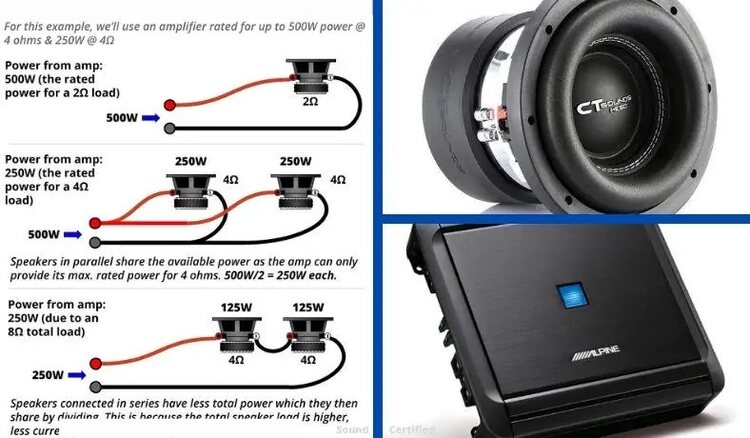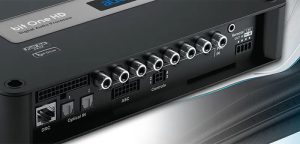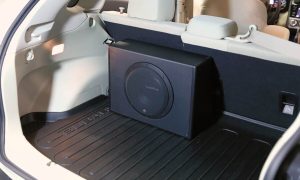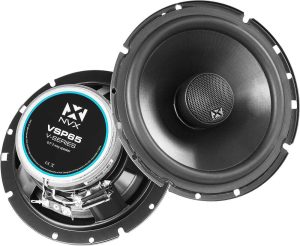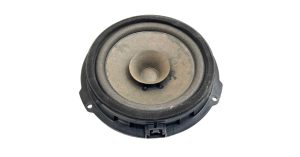Car audio enthusiasts often find themselves navigating the complex world of impedance when optimizing their audio systems. One common question that tends to surface is, “Can you run 4 ohm speakers at 2 ohms?” This article aims to delve into the intricacies of speaker impedance in car audio systems, exploring the consequences and considerations associated with attempting to run speakers at a lower impedance than their rated value.
Contents
Understanding Ohms in Car Audio Systems
Before we tackle the specific question at hand, let’s establish a foundational understanding of impedance in car audio systems. Impedance is measured in Ohms and represents the resistance that a speaker offers to the electrical current delivered by the amplifier. In simple terms, it’s the measure of how much the speaker impedes the flow of electrical energy.
The significance of impedance lies in its direct impact on the relationship between the amplifier and the speaker. For optimal performance, the impedance of the speakers must align with the specifications of the amplifier. This alignment ensures that the amplifier can effectively deliver power to the speakers without overloading or straining its components.
Impedance ratings for car speakers commonly come in standard values such as 4 ohms and 2 ohms. These values are crucial for creating a harmonious audio system where each component works in tandem to produce clear, distortion-free sound.
The Importance of Matching Impedance
Mismatched impedance is akin to trying to fit a square peg into a round hole – it simply doesn’t work well. When the impedance of the speakers does not match the amplifier’s specifications, various issues can arise, adversely affecting the audio quality and overall performance of the car audio system.
One of the primary concerns with mismatched impedance is the potential for distorted sound. The amplifier may struggle to effectively drive the speakers, leading to audio distortion and a less-than-ideal listening experience. Furthermore, the amplifier may be forced to work harder than intended, resulting in overheating and potential damage to its internal components.
Can You Run 4 Ohm Speakers at 2 Ohms?
Now, let’s address the specific question that led you here: Can you run 4 ohm speakers at 2 ohms? The short and direct answer is no. Attempting to run speakers at an impedance lower than their rated value poses significant risks to the entire audio system.
Speakers are designed with specific impedance ratings, and deviating from these ratings can have detrimental effects. Running 4 ohm speakers at 2 ohms can overload the amplifier, causing it to work beyond its capacity. This can lead to overheating, reduced amplifier lifespan, and compromised audio quality.
It’s crucial to understand that speakers and amplifiers are engineered to work optimally within specific impedance ranges. Straying from these ranges can result in unintended consequences, including potential damage to the speakers, amplifier, and other components of the audio system.
Risks and Considerations
The risks associated with attempting to run speakers at a lower impedance are not to be taken lightly. Amplifiers are designed to handle a specific load, and exceeding this load can lead to irreversible damage. Overheating is a common consequence, as the amplifier struggles to deliver the increased power demanded by speakers with lower impedance.
In addition to amplifier strain, the speakers themselves may not be equipped to handle the increased power output at 2 ohms. This can lead to damage to the voice coils and other internal components, jeopardizing the longevity of the speakers.
Manufacturers provide impedance specifications for a reason, and it’s crucial to adhere to these guidelines to ensure the proper functioning of your car audio system. Attempting to run speakers at 2 ohms when they are rated for 4 ohms is a gamble that often results in undesirable consequences.
Considerations should also extend to the warranty of your audio equipment. Deviating from manufacturer recommendations may void warranties, leaving you with potential repair or replacement costs in the event of damage.
Expert Opinions and Insights
To gain further insights into the implications of mismatched impedance, it’s beneficial to turn to experts in the car audio industry. Professionals consistently emphasize the importance of matching impedance to achieve optimal audio performance and system longevity.
Manufacturers often provide detailed guidelines and recommendations for pairing speakers with amplifiers. These guidelines take into account the specific characteristics of each component, ensuring a harmonious relationship between the amplifier and speakers. Deviating from these recommendations introduces unnecessary risks and compromises the overall integrity of the audio system.
Real-life examples from users who have experimented with running 4 ohm speakers at 2 ohms underscore the potential pitfalls. Distorted sound, equipment failure, and dissatisfaction with audio quality are common themes in these experiences. Learning from the mistakes of others can save enthusiasts from making similar errors and facing the associated consequences.
Alternative Solutions and Recommendations
Rather than attempting to run speakers at a lower impedance, there are alternative solutions to achieve desired audio effects without jeopardizing the integrity of your audio system.
- Adjusting Other Settings: Experimenting with settings such as equalization and gain can often provide the desired results without the need to alter the impedance of the speakers. Carefully fine-tuning these settings allows users to customize their audio experience without compromising the health of their equipment.
- Consulting with Professionals: If you find yourself facing challenges in achieving your desired audio setup, or if you’re uncertain about impedance matching, it’s advisable to consult with professionals in the car audio industry. These experts can provide personalized advice based on your specific equipment, preferences, and goals.
- Exploring Additional Components: Consider exploring additional components, such as signal processors or external crossovers, to enhance your audio system’s performance. These components can provide more flexibility in shaping your sound without resorting to potentially damaging practices.
It’s crucial to approach any modifications to your car audio system with a comprehensive understanding of the potential consequences. Seeking professional advice and exploring alternative solutions can lead to a satisfying audio experience without compromising the reliability of your equipment.
Conclusion
In conclusion, the answer to the question, “Can you run 4 ohm speakers at 2 ohms?” is a firm no. Mismatched impedance in car audio systems poses significant risks to both the speakers and the amplifier, compromising the overall performance and longevity of the audio system.
Understanding the importance of impedance matching, heeding expert advice, and exploring alternative solutions are key to making informed decisions for an optimal audio experience. While the temptation to experiment with speaker impedance may be present, the potential consequences far outweigh any perceived benefits.
Remember, when in doubt, seek professional guidance to ensure your car stereo system delivers the best possible sound without sacrificing reliability. A well-matched audio system not only enhances the joy of driving but also ensures that your investment in car audio equipment remains a source of satisfaction for years to come.
